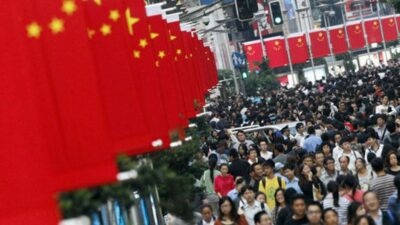>>REAL-TIME UPDATES IN THE WIRE. CLICK HERE<<<
China kept benchmark lending rates for September unchanged, in line with expectations, amid signs of economic stabilisation and persistent weakness of the yuan.
The one-year loan prime rate (LPR) was kept at 3.45%, while the five-year LPR was unchanged at 4.20%, said the People’s Bank of China on Wednesday. Most new and outstanding loans in China are based on the one-year LPR, while the five-year rate influences the pricing of mortgages.
China cut the one-year benchmark lending rate in August but surprised markets by keeping the five-year rate unchanged.
The country’s economic data for August showed signs of pickup, indicating the world’s second-largest economy was finding its footing after a sharp slowdown.
The steady LPR fixings follow the PBOC’s move last week to roll over medium-term policy loans and keep interest rate on those loans unchanged. The medium-term lending facility (MLF) rate serves as a guide to the LPR and markets see it as a precursor to any changes to the lending benchmarks.
Widening yield differentials with other major economies, particularly the US, and faltering domestic growth have led the yuan to depreciate by more than 5% against the greenback this year, prompting authorities to ramp up efforts to curb the weakness.
More attention should be given to the exchange rate of the yuan against a basket of currencies, Zou Lan, a China central bank official said at a news conference on Wednesday.
Zou said China will curb market disruptions, correct one-sided yuan moves and guard against the risk of the currency overshooting.
China’s central bank last week cut bank’s reserve requirement ratio (RRR) for a second time this year to boost liquidity and support the economic recovery.
Despite the steady LPR, some market watchers expected the central bank will likely lower five-year LPR and introduce more policy stimulus in coming months.
“Looking forward, we expect property sales volume to stabilise gradually at low levels in the coming months, infrastructure investment to grow at a robust but slower pace on a high base,” said Wang Tao, chief China economist at UBS.
“We maintain our real GDP growth forecast of 4.8% for full-year 2023. The development of property downturn, the magnitude and pace of policy easing still remain the biggest uncertainty for future growth trajectory.”

